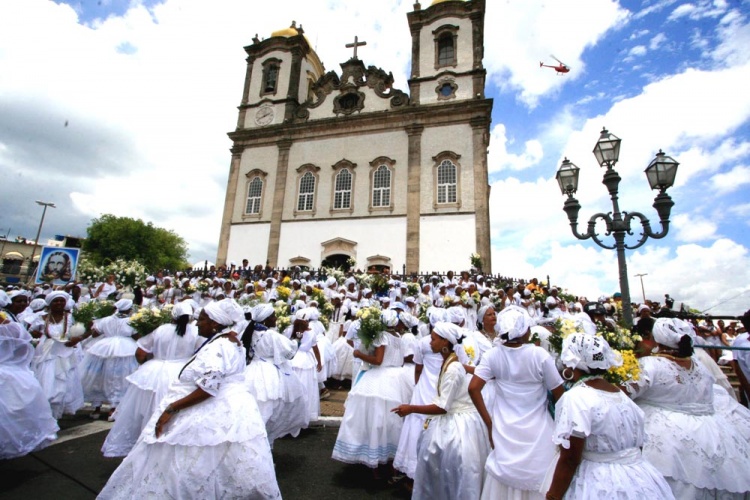Il rito afro-brasiliano più diffuso: Il candomblé di Bahia
Amici eccoci ancora a parlare di un culto molto particolare e piuttosto diffuso: Il candomblé di Bahia. Come sempre cerco di trattare la cosa in modo distaccato per spiegare di cosa si tratti ma mantenendo un grande rispetto per chi lo pratichi.
Tra tutti i culti di stampo Afro-Brasiliani questo è sicuramente il più tipico e si articola in tutta una serie di “terreiros” (centri) indipendenti tra loro, alcuni di stampo tipicamente africano ed altri più orientati alle correnti Sincretiste. In alcuni di questi centri prevale l’elemento dello spiritismo che rendono il candomblé molto simile all’Umbamba (Una religione sincretica che che fonde le tradizioni africane con il cattolicesimo romano, lo spiritismo e le credenze indigene americane), mentre altri sono forse più influenzati dal cattolicesimo rendendolo più blando.
Come nel caso della divinazione Ifa gli spiriti del candomblé sono dei mediatori, ossia gli Orixàs di origine Yoruba Nigeriana… In particolare gli spiriti africani Oxalá, Xangô e Ogum corrispondono a Gesù Cristo (venerato come Nostro Signore di Bonfim), San Gerolamo e Sant’Antonio. Il Terreiro rappresenta una sorta di miniatura di un villaggio africano con al centro un palo che simboleggia l’unione tra il regno dei cieli e quello della terra, spesso è inoltre presente una croce che richiama l’unione con il Cristianesimo, chiarendo il fatto che si tratti di una religione sincretica. Anche in questo caso la danza è fondamentale nei rituali ed è dato molto spazio alle donne come sacerdotesse.
Una tipica cerimonia del candomblé si articola in sei momenti:
- Un rito di purificazione preliminare
- La discesa degli spiriti, che durante la danza accompagnata da tamburi prendono possesso del corpo degli iniziati
- La danza degli iniziati sotto effetto degli spiriti
- Il congedo degli spiriti
- Il banchetto sacro
- La consultazione degli spiriti, che offrono aiuto e consigli per la vita quotidiana e spirituale.
Questo articolo vuole solo essere uno spunto per chi, interessato all’argomento, lo voglia approfondire. Trovo che questi antichi riti siano molto belli e meritino rispetto e nel mio piccolo cerco di saperne sempre di più.
The most widespread Afro-Brazilian ritual: Bahia’s candomble
Friends, we are still talking about a very particular and rather widespread cult: the candomble of Bahia. As always I try to treat the thing in a detached way to explain what it is but keeping great respect for those who practice it.
Among all the Afro-Brazilian cults this is certainly the most typical and is divided into a whole series of “terreiros” (centers) independent of each other, some of a typically African style and others more oriented to the Sincretist currents. In some of these centers the element of spiritualism prevails which makes candomble very similar to Umbamba (a syncretic religion that blends African traditions with Roman Catholicism, spiritualism and American indigenous beliefs), while others are perhaps more influenced from Catholicism making it more bland.
As in the case of Ifa divination the candomblé spirits are mediators, namely the Orixàs of Nigerian Yoruba origin … In particular the African spirits Oxalá, Xangô and Ogum correspond to Jesus Christ (revered as Our Lord of Bonfim), St. Jerome and Sant ‘Antonio. The Terreiro is a sort of miniature of an African village with a pole at the center that symbolizes the union between the kingdom of heaven and that of the earth, often there is also a cross that recalls the union with Christianity, clarifying the fact that it is a syncretic religion. Also in this case the dance is fundamental in the rituals and a lot of space is given to women as priestesses.
A typical candomble ceremony consists of six moments:
- A preliminary purification ritual
- The descent of the spirits, which during the dance accompanied by drums take possession of the body of the initiates
- The dance of the initiates under the effect of the spirits
- The spirits leave
- The sacred banquet
- Consultation of the spirits, offering help and advice for daily and spiritual life.
This article just wants to be a cue for those interested in the subject, want to deepen. I find that these ancient rites are very beautiful and deserve respect and in my little I try to learn more and more.
